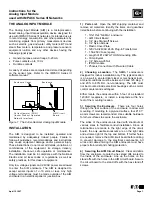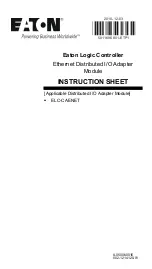
©
National Instruments Corporation
1-1
1
General Description
This chapter describes the general characteristics of the PCI E Series
boards.
General Characteristics
The PCI E Series boards are Plug and Play-compatible multifunction
analog, digital, and timing I/O boards for the PCI bus computers. This
family of boards features 12-bit and 16-bit ADCs with 16 and 64 analog
inputs, 12-bit and 16-bit DACs with voltage outputs, eight TTL-compatible
digital I/O, and two 24-bit counter/timers for timing I/O. Because the
PCI E Series boards have no DIP switches, jumpers, or potentiometers,
they are easily configured and calibrated using software. This feature is
made possible by the National Instruments MITE bus interface chip to
connect the boards to the PCI I/O bus. The MITE implements the PCI Local
Bus Specification so that the DMA, interrupts, and base address are all
software configurable.
Note
Revision C and earlier versions of the PCI-MIO-16XE-50 use the MITE as the
interface chip and do not support the DMA feature.
The PCI E Series boards use the National Instruments DAQ-STC system
timing controller for time-related functions. The DAQ-STC consists of
three timing groups that control analog input, analog output, and
general-purpose counter/timer functions. These groups include a total of
seven 24-bit and three 16-bit counters and a maximum timing resolution
of 50 ns.
A common characteristic with DAQ boards is that you cannot easily
synchronize several measurement functions to a common trigger or timing
event. The PCI E Series boards have the Real-Time System Integration
(RTSI) bus to solve this problem. The RTSI bus consists of our RTSI bus
interface and a ribbon cable to route timing and trigger signals between
several functions on up to five DAQ boards in your PCI bus computer.
The PCI E Series boards can interface to an SCXI system so that you can
acquire over 3,000 analog signals from thermocouples, RTDs, strain
gauges, voltage sources, and current sources. You can also acquire or













































